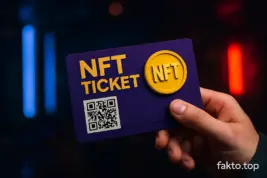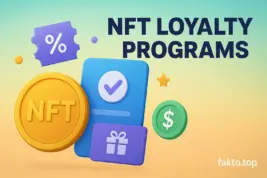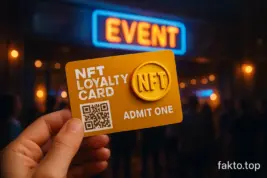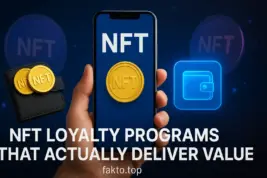NFT Loyalty Programs That Actually Deliver Value
NFT loyalty programs
Forget the JPEG flex. Today’s NFT loyalty programs are all about utility—real perks, gated access, and brand-backed benefits. From coffee discounts to exclusive merch drops, NFTs are evolving into digital loyalty cards with teeth.
The hype’s cooled, but the tech’s matured. And in the U.S., brands are quietly turning NFTs into tools for customer retention, engagement, and identity.
This isn’t about flipping anymore—it’s about belonging, perks, and programmable value. Let’s break down how Starbucks, Adidas, and Lacoste are leading the charge, and why this trend is just getting started.

Starbucks Odyssey: Polygon-powered perks
Starbucks Odyssey is the poster child for NFT loyalty done right. Built on Polygon, it rewards customers with digital stamps (NFTs) for completing challenges—like trying new drinks or learning brand history.
These NFTs unlock perks: early access to merch, invites to exclusive events, and even virtual coffee tastings. It’s not about speculation—it’s about engagement. Starbucks didn’t market Odyssey as “crypto”—they framed it as a next-gen rewards program. That subtle UX shift made it palatable for normies.
And because it’s on Polygon, gas fees are negligible. Starbucks isn’t chasing hype—they’re building retention. It’s Web3 without the jargon, and it works.
Adidas ALTS: Identity meets interactivity
Adidas ALTS is more than a sneaker drop—it’s a dynamic NFT ecosystem. Holders of ALTS tokens get access to evolving avatars, gated content, and exclusive product drops. The NFTs change over time based on user interaction, making each token a living identity. Adidas uses ALTS to gamify loyalty: the more you engage, the more your NFT evolves.
It’s part of their broader Web3 push, blending fashion, gaming, and community. The brand’s collabs with Bored Ape Yacht Club and gmoney laid the groundwork, but ALTS is the real utility play. Adidas isn’t just selling shoes—they’re selling digital identity with perks.

Lacoste UNDW3: Luxury meets token-gated access
Lacoste’s UNDW3 collection is a sleek fusion of fashion and Web3. Holders get access to a gated Discord, early product previews, and IRL events. It’s less about flipping, more about belonging. UNDW3 NFTs act as membership passes to Lacoste’s digital club.
The brand leaned into exclusivity, offering perks that resonate with its luxury audience. And they nailed the UX—no confusing wallet setups, just clean onboarding. Lacoste’s move shows that even legacy brands can use NFTs to deepen customer relationships. It’s loyalty reimagined, with a French accent and blockchain backbone.
NFT coupon codes and discounts
One of the most underrated use cases for NFTs? Coupons. Brands are issuing NFT-based discount codes that live in your wallet. No more email spam or expired links—just scan your token and unlock the deal. These NFTs can be programmed to expire, stack with other offers, or even evolve based on purchase history.
It’s loyalty with logic. Retailers like PacSun and Urban Outfitters are experimenting with NFT coupons tied to seasonal drops. The tech’s there—the challenge is UX. Once wallets become native to mobile shopping, expect NFT coupons to go mainstream. It’s Web3 meets retail therapy.
Token-gated content and community
Token-gated access is the new VIP pass. Whether it’s Discord servers, alpha chats, or exclusive video drops, NFTs are unlocking content for holders only. This model flips the script: instead of paying monthly, you buy once and hold. Projects like PROOF Collective and Friends With Benefits pioneered this, but now brands are catching on.
Even media outlets are testing NFT paywalls. The appeal? Scarcity and status. If your token gets you into the room, you’re part of the club. And that club can offer real value—networking, early info, or just good vibes. It’s Patreon meets blockchain.

AbsMouseism NFT: absurdist art with culture
Let’s get weird. The AbsMouseism NFT collection on MetaMask is a chaotic blend of abstract mice and vaporwave aesthetics. No roadmap, no Discord—just vibes. And yet, it’s gaining traction. Why? Because it reminds people why NFTs were fun: creativity, absurdity, and culture. AbsMouseism isn’t trying to be utility-heavy—it’s art for art’s sake. But it’s also a signal: the weird stuff is back. In a market flooded with utility talk, AbsMouseism proves that there’s still room for chaos. And yes, I grabbed a few—just for the culture.
Web3 loyalty vs traditional rewards
| Feature | Traditional Loyalty | Web3 NFT Loyalty |
|---|---|---|
| Ownership | Centralized, brand-controlled | User-owned, transferable |
| Access | Email-based, limited | Token-gated, global |
| Perks | Points, discounts | Events, merch, content |
| UX | Familiar, frictionless | Improving, wallet-native |
| Resale | Not possible | Secondary market enabled |
nft loyalty rewards for customers
Brands are finally realizing that NFTs can do more than look pretty—they can reward loyalty. Starbucks Odyssey gives perks for completing challenges. Adidas ALTS evolves based on engagement. Lacoste UNDW3 offers gated access. These aren’t gimmicks—they’re programmable incentives. And because NFTs live in wallets, they’re portable across platforms. Imagine earning a token from Nike and using it for a discount at Spotify. That’s the future. Loyalty isn’t siloed anymore—it’s interoperable. And NFTs are the rails.
how brands use nft for loyalty
Big brands aren’t just dabbling—they’re deploying. Starbucks, Adidas, Lacoste, Nike, and even Ticketmaster are integrating NFTs into their loyalty stacks. The goal? Deepen engagement, reduce churn, and offer perks that feel earned. NFTs let brands gamify interaction: complete a task, earn a token, unlock a reward. It’s simple, sticky, and scalable. And because it’s on-chain, the data’s transparent. Brands can track engagement, reward behavior, and build communities around ownership. It’s CRM 2.0—with a blockchain twist.

nft gated content strategy
Gated content isn’t new—but NFTs make it seamless. Instead of passwords or subscriptions, users just connect their wallet. If the token’s there, access is granted. This model is exploding in media, education, and entertainment. Think token-gated podcasts, video drops, or even online courses. It’s frictionless and secure. And because tokens are programmable, creators can offer tiered access: basic holders get one thing, premium holders get more. It’s Patreon, but smarter. And it’s already live.
nft coupon code integration
Integrating NFT coupons into e-commerce is the next frontier. Brands can issue tokens that act as discount codes, loyalty stamps, or even access passes. These NFTs can be scanned at checkout, verified on-chain, and burned after use. It’s secure, trackable, and flexible. Shopify and WooCommerce are already testing plugins. Once UX catches up, expect NFT coupons to replace email spam. It’s loyalty with logic—and it’s coming fast.
nft access pass for events
Ticketmaster’s already doing it: NFT tickets for concerts, sports, and festivals. These tokens act as access passes, proof of attendance, and even collectibles. They’re harder to fake, easier to transfer, and cooler to flex. Imagine showing up to Coachella with a token in your wallet—not a barcode. It’s the future of ticketing. And it’s already here. NFTs aren’t just art—they’re infrastructure. And events are the perfect use case.
Final thoughts: why this matters
We’re past the JPEG era. NFTs are evolving into tools—loyalty cards, access passes, identity layers. Brands like Starbucks, Adidas, and Lacoste are leading the way, proving that NFTs can drive real engagement. And weird collections like AbsMouseism remind us that culture still matters. If you want the full picture of where NFTs are headed, check out our deep dive on

FAQ: NFT Loyalty Programs Explained
- What is an NFT loyalty program?
It’s a blockchain-based system where brands reward customers with NFTs that unlock perks, access, or discounts. - How do NFT coupons work?
NFT coupons live in your wallet and act as programmable discount codes—scan, verify, and redeem. - Which brands use NFT for loyalty?
Starbucks (Odyssey), Adidas (ALTS), and Lacoste (UNDW3) are leading examples of real-world NFT loyalty programs. - Can NFT loyalty tokens be resold?
Yes. Unlike traditional rewards, NFT tokens can be traded on secondary markets if allowed by the brand. - What perks do NFT holders get?
Access to exclusive merch, IRL events, gated content, discounts, and sometimes voting rights in brand decisions. - Is NFT loyalty secure?
It’s more secure than email-based systems—tokens are verified on-chain and harder to fake or duplicate. - Do I need crypto to use NFT rewards?
Not always. Many brands simplify onboarding with custodial wallets or fiat-friendly platforms like Polygon. - Where can I learn more about NFT trends?
Check out our deep dive on NFTs in 2025 to explore future use cases, market shifts, and brand strategies.